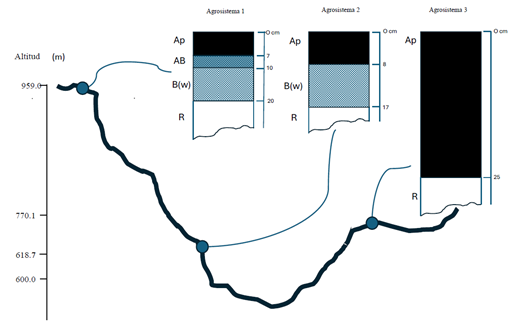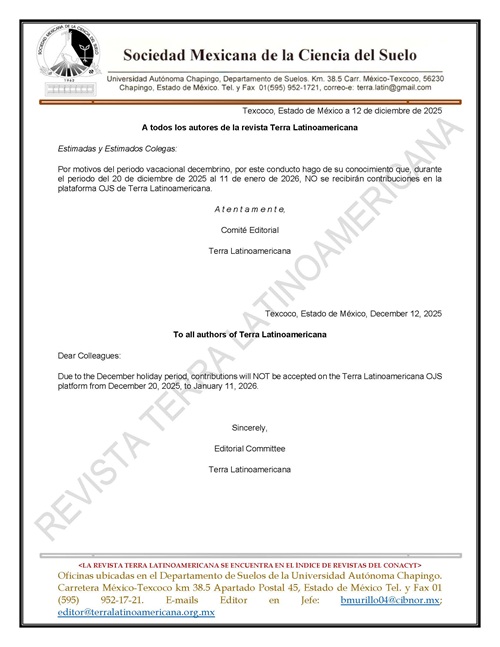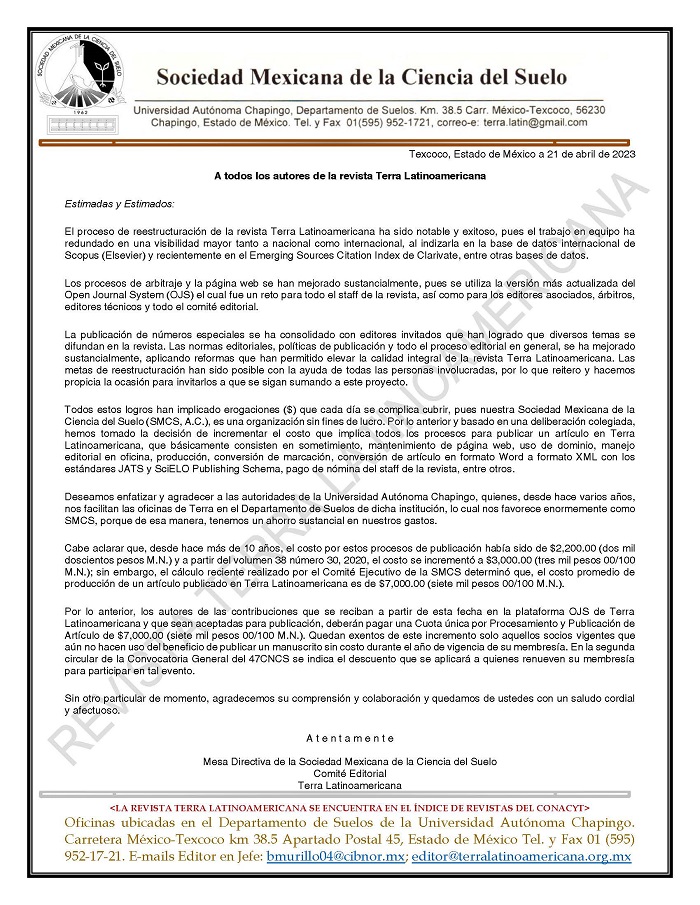Microbial Biomass Carbon in Cof fee Agrosystems of San Miguel Tzinacapan, Puebla, Mexico
DOI:
https://doi.org/10.28940/terra.v42i.1751Keywords:
cuetzalan, cof fee cultivation, soil indicators, soil microbiotaAbstract
Microbial biomass carbon (MBC) is a biological indicator used to evaluate the ef fect of management practices in agricultural soils, due to the importance of microorganisms in exchanging nutrients and energy. In the community of San Miguel Tzinacapan that belongs to the municipality of Cuetzalan del Progreso in the state of Puebla, one of the most important economic activities is cof fee production. However, farmers claim that in recent years production has decreased, as well as soil fertility, which has brought economic and food security problems, since their production is also for self-consumption. Considering the above, the present study evaluates the relationship that MBC has in three typical cof fee agrosystems of San Miguel Tzinacapan. Agrosystem (A-1) is a polyculture fertilized with chicken manure; the second one (A-2) is a polyculture fertilized with compost; and the third one (A-3) is a conventional cof fee monoculture. Two soil samplings were carried out, one during the rainy season and the other during the dry season to describe the biophysical and tillage components. Soil physical and chemical parameters were obtained with standardized techniques and the MBC by the fumigation-incubation method. Among the results, agrosystem A-1 showed the highest concentration of organic matter (10.6% in dry seasons and 6.49% in rainy seasons), organic carbon (6.15 and 3.15%), and exchangeable cations especially Ca2+ (42.43 and 17.87 meq 100-1) and MBC (2.51 g kg-1). The lowest values were observed in agrosystem A-3 with an organic matter concentration of 3.86 and 4.60% during the dry and rainy seasons, respectively. The highest MBC concentration occurred during the dry season for agrosystem A-1, which had the highest concentration (0.93 g kg-1), followed by agrosystem A-2 with 0.18 g kg-1. Regarding soil health, agrosystem A-1 obtained the highest values (8.6) of the parameters evaluated in each agrosystem.
Downloads
Publication Facts
Reviewer profiles N/A
Author statements
- Academic society
- Terra Latinoamericana
- Publisher
- Mexican Society of Soil Science, C.A.

















